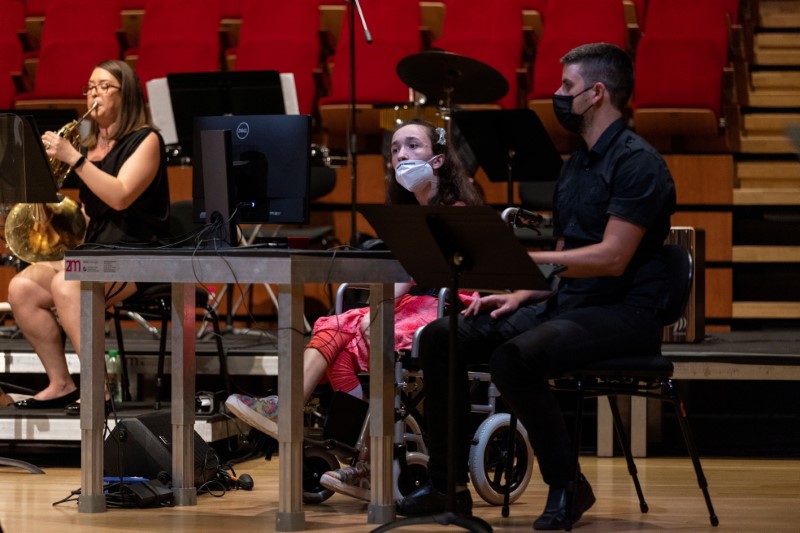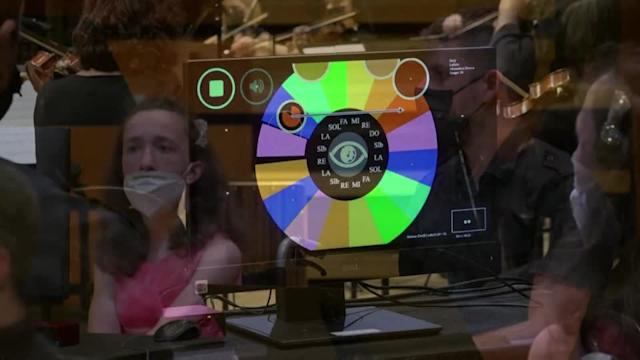The student with cerebral palsy, who cannot use her hands or speak, is playing the “Eyeharp”, gaze-controlled digital software which allows people with disabilities to play music, something she had never thought possible.
“I felt strange, I had never imagined such a thing,” said Alexandra, using a speech-generating computer program as she described trying the “Eyeharp” for the first time in her home on Lesbos with creator Zacharias Vamvakousis.

A computer scientist and musician, Vamvakousis was inspired to create the program after a musician friend was hurt in a motorcycle accident shortly before they were to play a concert together.
“At the beginning, it was not clear whether he would be able to move his arms, his hands, and play music again,” said Vamvakousis of his friend, who played the Cretan Lyra. “It was a shock for me and I realized there is a need for this kind of technology.”

The digital eye-tracking technology, widely used in gaming, security, and medicine, monitors eye movements to performing commands. The eye rests on each musical note spaced out on a wheel on the screen and on average can play three to four notes per second. The program can “play” 25 musical instruments.
“Without doing it digitally this would never be possible to play music in real-time,” Vamvakousis said. “It takes away the actual action of strumming a chord.”

The program needs discipline and concentration, he says, as one has to keep the eyes from wandering too quickly to the next note, but students are thrilled when they hear their efforts.
He has taught the program in special-needs schools in Barcelona, where he studied and says more than 2,000 people have downloaded the program.
Due to the pandemic he currently teaches online, mostly children with cerebral palsy, but the program is also designed for those with muscular dystrophy, limb amputation, quadriplegia, or spinal cord injury.
According to Reuters














